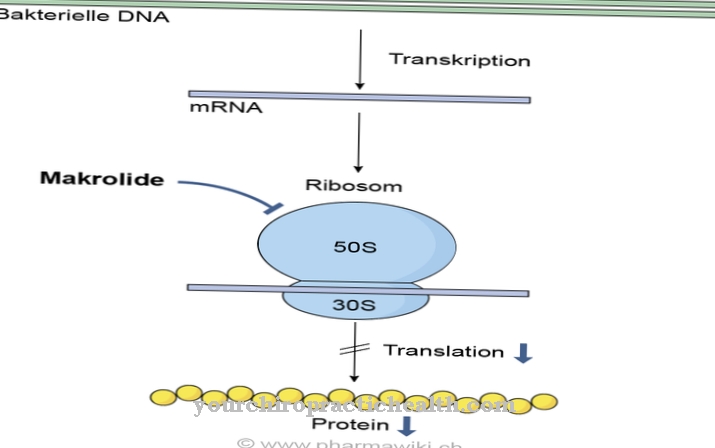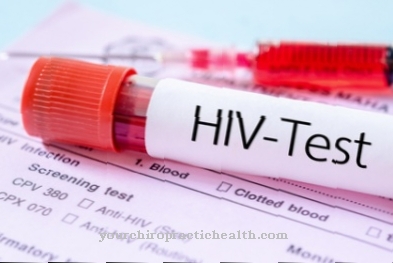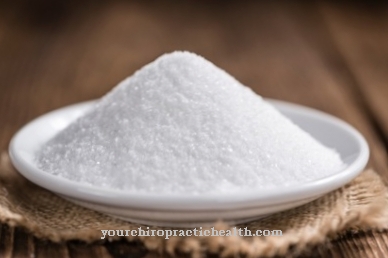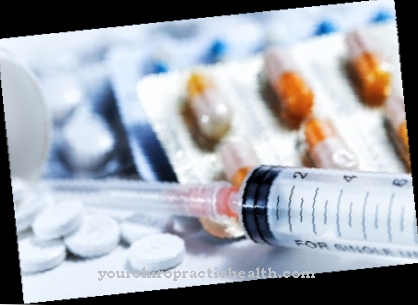At Valganciclovir is an antiviral drug that is used to treat cytomegalovirus retinitis (inclusion body disease) found in AIDS patients. The drug is assigned to the group of nucleoside analogues and is widespread. As a prodrug of the substance ganciclovir, it has essentially the same effects and side effects as this one.
What is valganciclovir?
Valganciclovir is an antiviral drug that belongs to the group of nucleoside analogues and is an essential part of the treatment of AIDS patients. It is given to treat cytomegalovirus retinitis (inclusion body disease). This is a disease caused by the human cytomegalovirus and is especially dangerous for people with weak immune systems.
Valganciclovir is taken orally (through the mouth) and is usually well and quickly absorbed by the body. The active ingredient itself only becomes active within the body. After being metabolized (metabolized), it is converted into the related substance ganciclovir. Valganciclovir is therefore considered its prodrug.
The active ingredient is described with the chemical formula C 14 - H 22 - N 6 - O 5, which corresponds to a moral mass of 354.36 g / mol. In Germany, Austria and Switzerland, Valganciclovir is sold under the name Valcyte® as a prescription and pharmacy-only drug.
Pharmacological effect
Valganciclovir is composed of two stereocenters, which basically makes the existence of four so-called stereoisomers possible. The stereocenters of valganciclovir are, however, all configured as S. The actual number of stereoisomers is therefore limited to only two, which has an impact on the pharmacological effect of the substance.
After being metabolized in the human body, this inhibits the reproduction of the human cytomegalovirus (HCMV), which is also known as human herpes virus 5 (HHV 5). The virus is particularly dangerous for those people who - like AIDS patients - only have a very weak immune system.
Valganciclovir achieves its virus-inhibiting effect by converting the basically inactive substance within the human body into the pharmacologically very active substance ganciclovir. This makes it impossible for HHV 5 or HCMV to produce an enzyme that is essential for reproduction. Valganciclovir is therefore a so-called prodrug, which is why it has positive pharmacokinetics and high bioavailability.
Medical application & use
The therapy of the cytomegalovirus (HCMV) is the main area of application of valganciclovir. The virus is usually harmless for a healthy person because the immune system is able to reduce the multiplication to a tolerable level.
However, if the immune system is severely weakened, for example due to an AIDS disease, the infection with HCMC or HHV 5 can be life-threatening. Because in these cases the body itself is no longer able to keep the virus count low. These can spread almost uncontrollably.
Valganciclovir counteracts this by preventing the viruses from multiplying. The active ingredient, which is generally taken orally as a film-coated tablet, is therefore a virostat.
Risks & side effects
Valganciclovir can cause side effects. However, this is not necessarily the case. Since valganciclovir is a prodrug and is converted into the active ingredient ganciclovir within the human body, the side effects largely correspond to those of ganciclovir.
Accordingly, a pathogenic reduction in neutrophil granulocytes (so-called neutropenia) can occur. A pronounced lack of granulocytes in the blood (agranulocytosis) is also a typical side effect of ganciclovir and valganciclovir. In addition, very low levels of hemoglobin in the blood (anemia) can also be caused by valganciclovir.
Symptoms of the gastrointestinal tract such as diarrhea, abdominal pain, stomach cramps and vomiting are also possible side effects.
Occasionally, liver cell damage or neuropathy can also occur. If an intolerance to valganciclovir or ganciclovir is known, the active ingredients must not be taken.

























.jpg)

.jpg)
